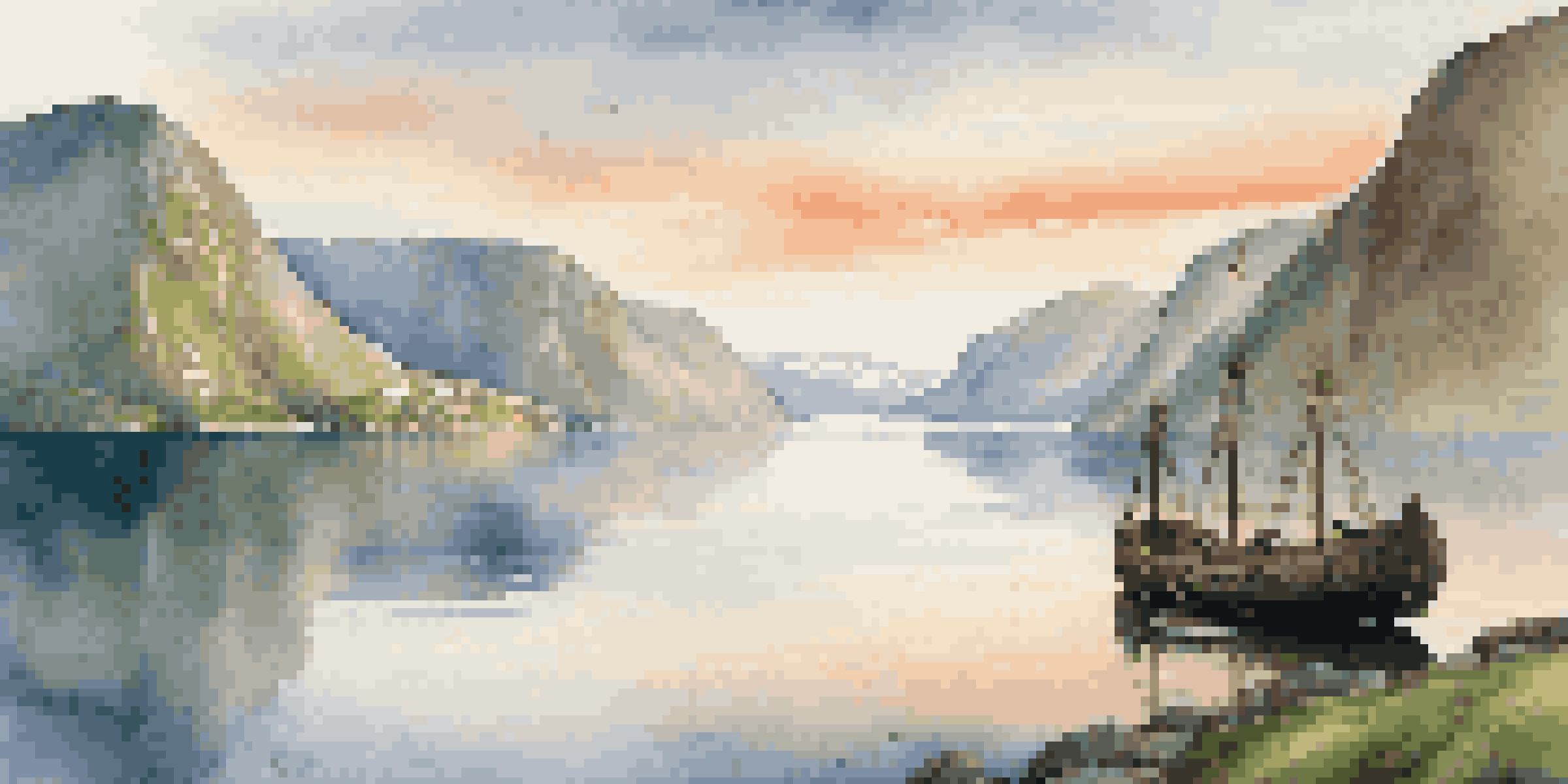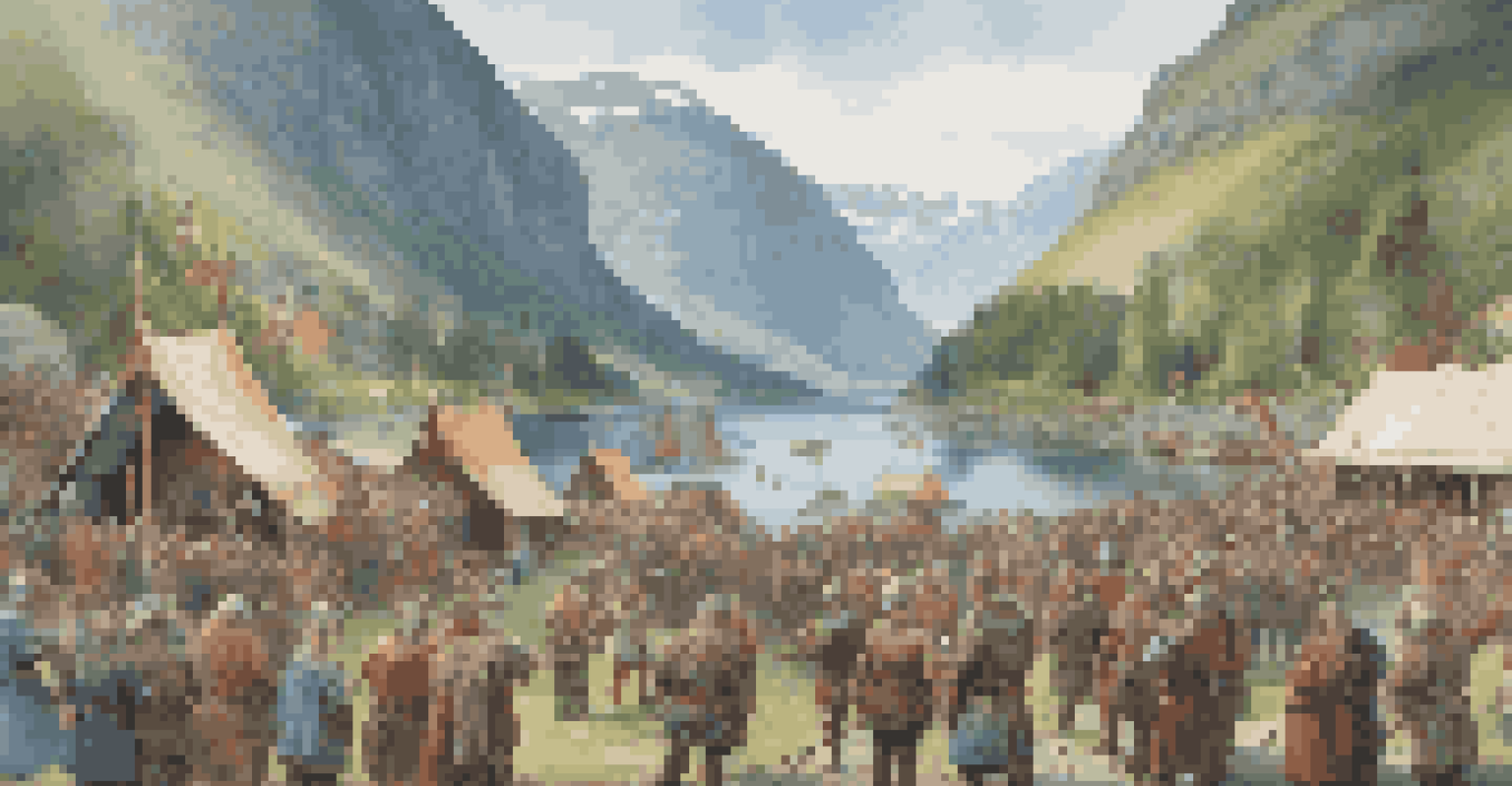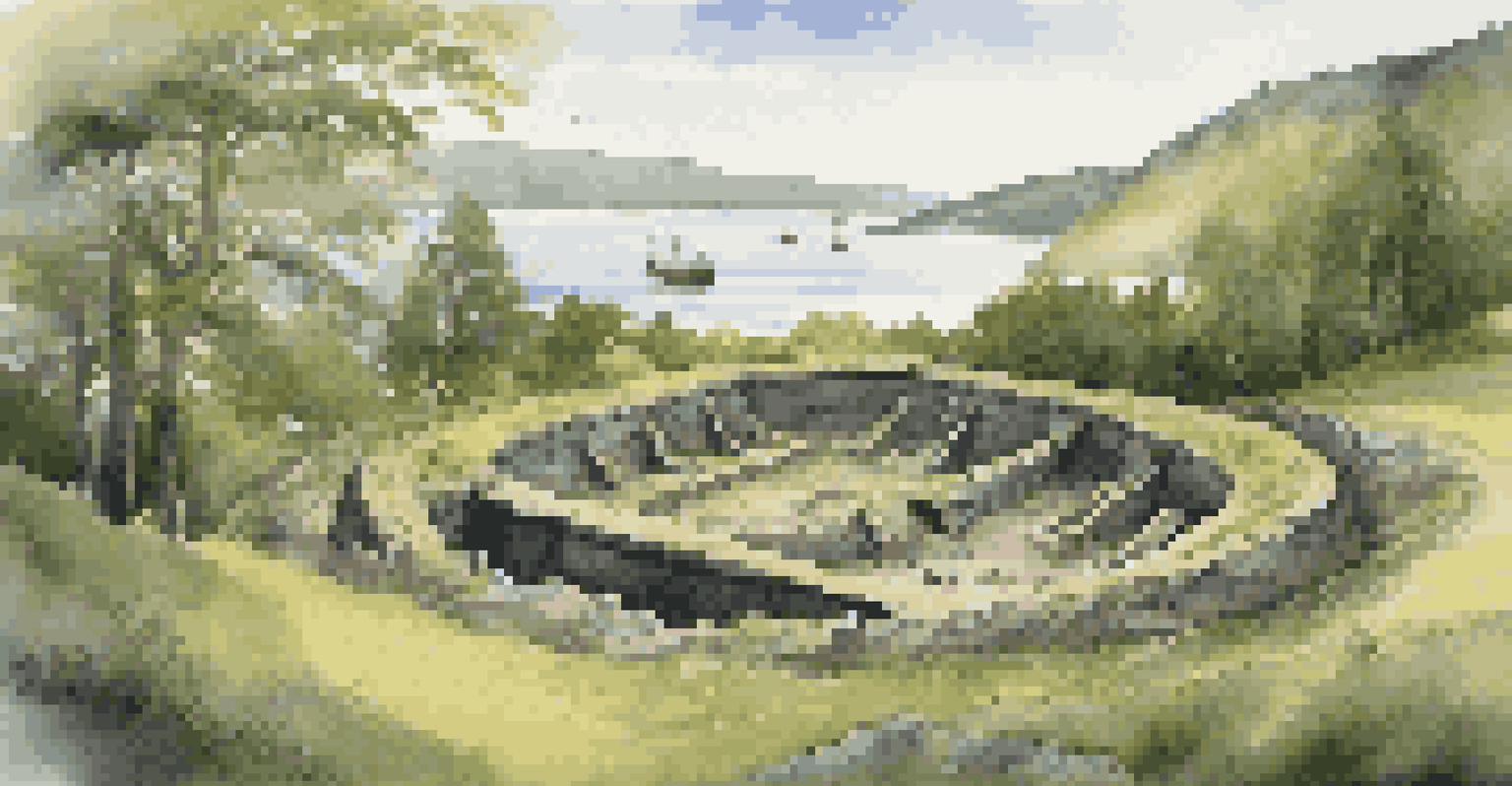Exploring the Viking History in Norway's Fjords

The Enigmatic World of the Vikings
The Vikings, seafaring warriors from Scandinavia, left an indelible mark on history. Known for their explorations, trade, and raids, they were not just fierce fighters but also skilled navigators and craftsmen. Their legacy can be traced through artifacts, sagas, and, most importantly, the breathtaking landscapes they inhabited, particularly in Norway's fjords.
The Vikings were a seafaring people who were not just warriors but also traders and explorers, deeply connected to the landscapes they navigated.
Norway’s fjords, with their dramatic cliffs and serene waters, served as both a home and a launching point for Viking voyages. The interplay of natural beauty and human ingenuity is evident in the way these landscapes were utilized for fishing, farming, and shipbuilding. This unique geography fostered a distinct Viking culture that thrived amidst its challenges.
To understand the Viking spirit, one must delve into this era, where exploration was driven by the desire for new lands and resources. The fjords not only provided refuge but also strategic advantages for launching expeditions. It's within these majestic landscapes that we begin to unravel the complexities of Viking life.
Key Fjords and Their Viking Significance
Among Norway's numerous fjords, Sognefjord stands out as the longest and deepest, often referred to as the 'King of the Fjords.' Historically, it was a crucial route for Viking ships, connecting trade routes and facilitating cultural exchanges. This fjord is dotted with picturesque villages that echo tales of Viking settlements and their daily lives.

Another notable fjord is the Geirangerfjord, a UNESCO World Heritage site that showcases stunning waterfalls and steep cliffs. The Vikings utilized this fjord for its rich resources, including fish and timber. Today, it serves as a reminder of the Vikings' deep connection to nature and their reliance on its bounty for survival.
Vikings' Connection to Norway's Fjords
The fjords of Norway were crucial for Vikings, serving as both a home and a launch point for their explorations and trade.
Exploring these fjords provides insight into the Viking way of life, from their shipbuilding techniques to their understanding of navigation. Many archaeological finds, such as ancient boat graves and remnants of Viking farms, have been discovered in these areas, revealing the sophisticated society that once thrived here.
Viking Mythology and Its Connection to the Fjords
Viking mythology is steeped in tales that reflect their reverence for nature, particularly the fjords that surrounded them. Gods like Njord, associated with the sea and winds, exemplify the Vikings' close bond with the waters of Norway. These myths often served as guiding principles, influencing their daily lives and seafaring endeavors.
To understand the Vikings, one must delve into their mythology, which is a reflection of their reverence for the natural world around them.
The fjords, with their towering mountains and deep waters, were often seen as sacred spaces where gods and spirits resided. This belief system not only shaped their worldview but also their navigation techniques, as they sought favorable winds and tides to honor these divine entities. Such spirituality intertwined with practicality made their voyages both adventurous and meaningful.
By exploring these myths, we gain a deeper understanding of how the Vikings perceived their environment. The stories of gods and heroes provide context for their adventurous spirit, as well as a lens through which we can view the fjords not just as physical landscapes, but as integral parts of their cultural identity.
Archaeological Discoveries in the Fjords
Norway's fjords are treasure troves of archaeological wonders that unveil the Viking past. Discoveries such as burial mounds, longhouses, and ancient ship remains have provided invaluable insights into Viking society. These artifacts help us piece together the puzzle of how they lived, worked, and worshipped.
The Oseberg ship burial, one of the most significant archaeological finds, was discovered in a fjord near Oslo. This well-preserved ship, along with its grave goods, reflects the sophistication of Viking craftsmanship and their burial practices. Such discoveries continue to spark interest and research, shedding light on their maritime culture.
Viking Mythology and Nature
Viking mythology deeply intertwined with their environment, as the fjords were seen as sacred spaces influencing their seafaring practices.
Visiting these archaeological sites allows us to walk in the footsteps of the Vikings, experiencing firsthand the environments that shaped their lives. Each find tells a story, offering a glimpse into a world that was both harsh and beautiful, where the fjords played a vital role in their existence.
Viking Trails: Following the Footsteps
For those intrigued by Viking history, several trails in Norway's fjords allow visitors to follow in their footsteps. The Viking Road, which connects various historical sites, offers an immersive experience as you explore ancient settlements and burial sites. Walking these paths provides a tangible connection to the past, making history come alive.
These trails not only showcase the Vikings' remarkable navigation skills but also their understanding of the land. Hiking through the fjords, you can witness the landscapes that inspired their legends and stories. This journey becomes a blend of adventure and education, highlighting the interplay between nature and culture.
As you traverse these routes, it's easy to imagine the Vikings traveling with their ships and families, navigating the same waters you are. This sense of continuity deepens your appreciation for their history while fostering a connection to the stunning environment that shaped their lives.
Modern-Day Vikings: Festivals and Celebrations
Today, the spirit of the Vikings lives on through various festivals and celebrations held in Norway's fjords. Events like the Viking Festival in Gudvangen attract enthusiasts from around the world, showcasing traditional crafts, music, and reenactments of Viking life. These gatherings foster a sense of community while honoring the rich heritage of the Vikings.
During these festivals, visitors can engage in activities such as sword fighting, archery, and traditional Viking games. This hands-on experience allows participants to step into the shoes of the Vikings, providing a fun and educational way to learn about their customs and lifestyle. It’s an opportunity to connect with history in a lively and interactive setting.
Modern Celebrations of Viking Legacy
Festivals in Norway today celebrate Viking heritage, allowing people to engage with history through interactive experiences and traditional activities.
Such events highlight the enduring fascination with Viking culture and its influence on modern Norwegian identity. By celebrating their legacy, we not only preserve history but also keep the stories of the Vikings alive for future generations to explore and enjoy.
The Lasting Legacy of the Vikings in Norway
The legacy of the Vikings continues to resonate throughout Norway, particularly in the fjords where their stories first unfolded. From place names to cultural traditions, the influence of Viking heritage is woven into the fabric of Norwegian society. This rich history serves as a source of pride and identity for many Norwegians today.
The fjords, once the backdrop for Viking explorations, are now symbols of resilience and adventure. Their stunning landscapes attract tourists seeking to experience the beauty and history that shaped a civilization. This ongoing interest in Viking culture ensures that their stories and contributions are remembered and celebrated.

In conclusion, exploring the Viking history in Norway's fjords is not just about the past; it’s about understanding how this incredible heritage continues to shape the present. Whether through archaeological sites, trails, or festivals, the Viking spirit endures, inviting everyone to discover the tales of bravery, exploration, and connection that define this remarkable culture.